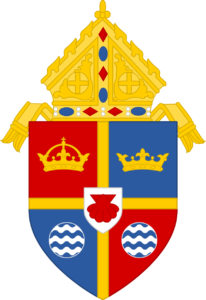About The Roman Catholic Diocese of Brooklyn
Founded in 1853, the Roman Catholic Diocese of Brooklyn is one of the only dioceses in the United States that is made up of 100% urban territory, serving the boroughs of Brooklyn and Queens. The Diocese has one of the largest churches in Brooklyn and Queens and regularly holds Masses in 24 different languages across 186 parishes with 210 churches to accommodate for its colorful and diverse population. Within its borders is the seventh largest Catholic school network in the United States, with 111 elementary schools and academies that educate more than 27,000 students. With so many departments, religious events, schools and more to keep track of, the Diocese’s Archivist and Records Manager, Joseph Coen, knew there had to be a better way to manage their records.
The Paper Problem
The Roman Catholic Diocese of Brooklyn have accumulated an overwhelming amount of physical records over the years, including historical records, business records from other departments or agencies, and also Catholic School records. These records were mostly stored on-site, but due to the large number of records, the Diocese acquired a warehouse in Bushwick and a storage office in Douglaston for additional storage. Overall there was approximately 8,000 cubic-foot boxes of records and it was becoming difficult to keep track of their location and which records had been checked out. Record destruction and records management were done manually and proved to be an increasingly complex task for the archivists, so they went looking for a solution.

The Solution: Laserfiche Records Management Software
Joseph Coen looked at a variety of products ranging from managing boxes, to strictly archival software, to more records management focused, and even document management systems that could also handle records. They were able to narrow it down but many of those solutions were high cost and/or had far more features than they needed at that time. They decided to speak with an acquaintance and well-known records management specialist, Bill Saffady, who suggested they work together with Accelerated Information Systems (AIS) to find a records management solution that could meet all of their needs. After a few meetings and demonstrations, the Diocese chose to begin their project with AIS because they were able to provide a reasonably priced system with the flexibility and features required along with an enthusiastic and skilled approach. The features that were most important to the Diocese of Brooklyn that Laserfiche provides were:
- Ability to manage physical paper records
- Track location and possession of records
- Powerful advanced search
- Secure destruction of inactive records
- Digital records management for existing electronic documents
- Versatile system configuration capabilities
- Flexible file and folder structure that can mimic existing structures
The Results
Ever since implementing Laserfiche, the Roman Catholic Diocese of Brooklyn has begun populating data structure, file structure, creating archives templates which allows metadata to be entered to retrieve information, as well as putting business records and their own archival information into the system. They also included a file for permanent records, subdividing them into business and archival. Scanning these records into Laserfiche and performing Optical Character Recognition (OCR) on each item makes these records full-text searchable which greatly reduces time spent on search and retrieval. They have also partnered with the HR department to digitize paper documents. Scanning these HR documents frees up floor space in their work area and allows for quick and easy search, retrieval, and document tracking. The medical division within the HR department has been scanning their own files into Laserfiche and are excited to continue learning about the capabilities that Laserfiche offers. Not only has Laserfiche proven to be a useful tool in organizing and maintaining records for the archivists, but several other departments are already hopping on board and looking to advance how they use the system.
It’s growing faster than we imagined. We thought we’d be calmly rolling out and gradually letting other people in on the act, but the demand is growing.
Joseph Coen
Archivist
Diocese of Brooklyn
Future Plans
When asked about how they plan to use Laserfiche in the future, Joseph Coen confidently said that they are yet to fully utilize the records management module, and are looking forward to taking advantage of the new features and capabilities offered in Laserfiche 10 and 10.1. There are still many containers and ring binders that need to be scanned as well as records to be separated out for destruction and retention. Workflow automation is another feature of Laserfiche that the Diocese of Brooklyn is excited to start implementing in their records management department as well as for HR and accounting.


